Southwest Florida International Airport is a major county-owned airport in the South Fort Myers region of unincorporated Lee County, Florida, United States.
The airport serves the Southwest Florida region, including the Cape Coral-Fort Myers, Naples-Marco Island, and Punta Gorda metropolitan areas, and is a U.S. Customs and Border Protection port of entry.
It currently is the second-busiest single-runway airport in the United States, after San Diego International Airport. In 2019, the airport served 10,225,180 passengers, the most in its history.
The airport sits on 13,555 acres (5,486 ha, 21.2 sq.mi.) of land just southeast of Fort Myers, making it the third-largest airport in the United States in terms of land size (after Denver and Dallas/Fort Worth). 6,000 acres of the land has been conserved as swamp lands and set aside for environmental mitigation.

History
Construction of the airport began in 1980, and it opened on schedule on May 14, 1983, with a single 8400-ft runway.
The airport was renamed Southwest Florida International Airport in 1993, though it had hosted international flights since 1984 and U.S. Customs since 1987.
The name change coincided with the completion of a 55,000 square foot Federal Inspection facility annexed to the original terminal’s Concourse A.
The runway was also lengthened to 12,000 ft (3,658 m) at the same time to better accommodate international service (making it the fourth-longest runway in Florida).
In 1988 the airport exceeded its annual capacity of 3 million passengers; by 2004, the airport was serving nearly 7 million passengers annually.
The original terminal had 17 gates on two concourses. While three of the gates were added in a minor expansion of the B concourse in the late 1990s, the original terminal’s design was not conducive to a major expansion.
With the terminal operating at more than double its intended capacity, construction of a new Midfield Terminal Complex began in February 2002. The $438 million terminal opened on September 9, 2005.
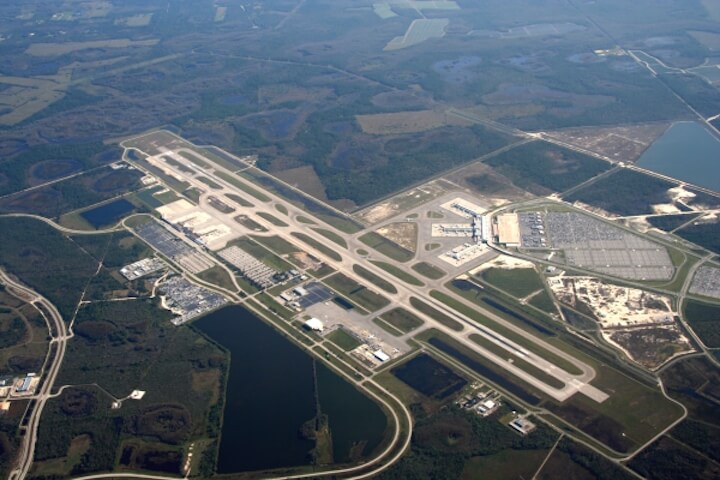
The terminal, designed by Spillis Candela/DMJM Aviation, has three concourses and 28 gates and can eventually expand to five concourses with 65 gates.
In early 2015, Terminal Access Road, the airport’s main entrance road, was extended past Treeline Avenue to connect directly to Interstate 75, allowing airport-related traffic to avoid local streets.
The airport can now be accessed directly from the freeway at Exit 128. Terminal Access Road was then expanded to six lanes in late 2016.
Since beginning commercial airline service on May 14, 1983 through the end of 2019, over 205.5 million passengers (enplaned and deplaned) have transited through RSW.
There has been over 2.67 million aircraft operations at the airport since its opening.
A new $16 million Airport Rescue and Fire Fighting facility (Lee County Station 92) opened in July 2013. A 9,100 ft (2,800 m) parallel runway is in planning.
The project includes a relocated air traffic control tower, apron expansion, crossfield taxiway system, mitigation activities and FPL electrical line relocation. The new air traffic control tower and parallel runway were expected to be completed by 2019, however this has been pushed back to late 2020.
The apron expansion and crossfield taxiway system were completed in late 2013. The entire project is estimated to cost $454 million.
In early 2018, the Lee County Port Authority (LCPA) announced plans to ease seasonal security wait times by expanding and relocating the current security checkpoints for each concourse.
By relocating each checkpoint, there will be more restaurants, shops, and post-security spaces. According to the announcement by the LCPA, this expansion could cost between $150 million – $180 million.
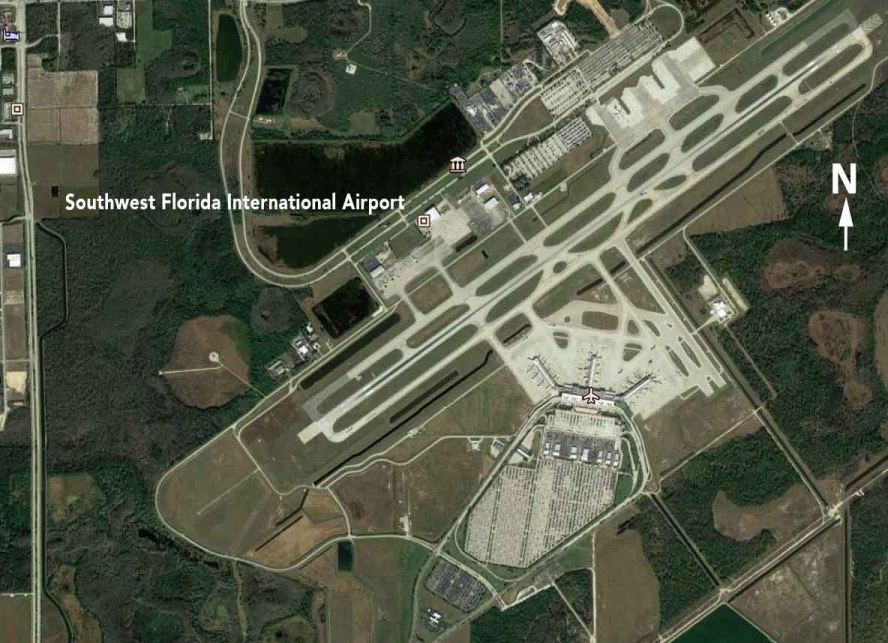
Facilities
Airfield
The airport covers 13,555 acres (54.9 km2), 10 mi (16 km) southeast of Fort Myers.
Runways
Runway 6/24: 12,000 x 150 ft (3,658 x 46 m) Asphalt Airport IQ 5010
Activity
In 2019 the airport had 85,227 aircraft operations, average 233 per day.
Terminal
- 798,000 sq ft (74,100 m2)
- Design capacity is 10 million passengers per year, with 28 gates on 3 concourses (current B,C and D). The terminal buildings can be expanded incrementally to 65 gates on 5 concourses (A-E).
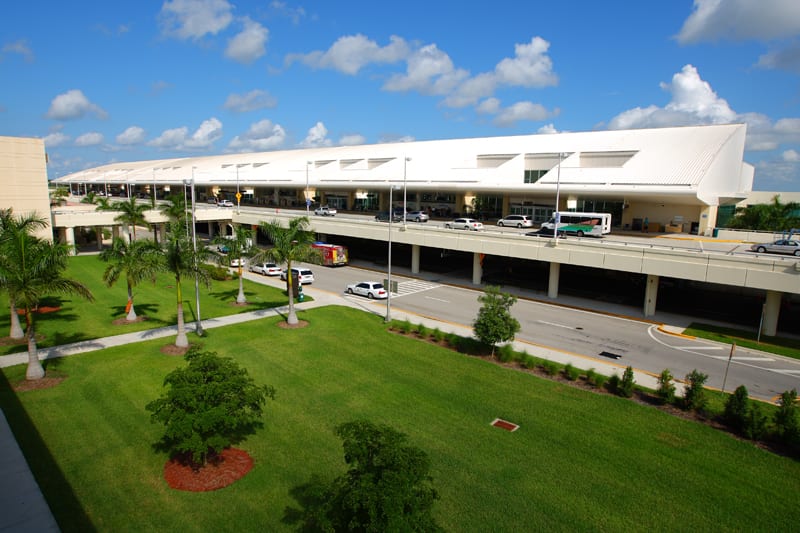
Parking
- 11,250 spaces for hourly/daily parking located around the main terminal building and the entrance to the facility.
- There is a three-story parking structure adjacent from the main terminal, used to house short-term parking.
- 30-space “cell-phone lot” for customers picking up arriving passengers.
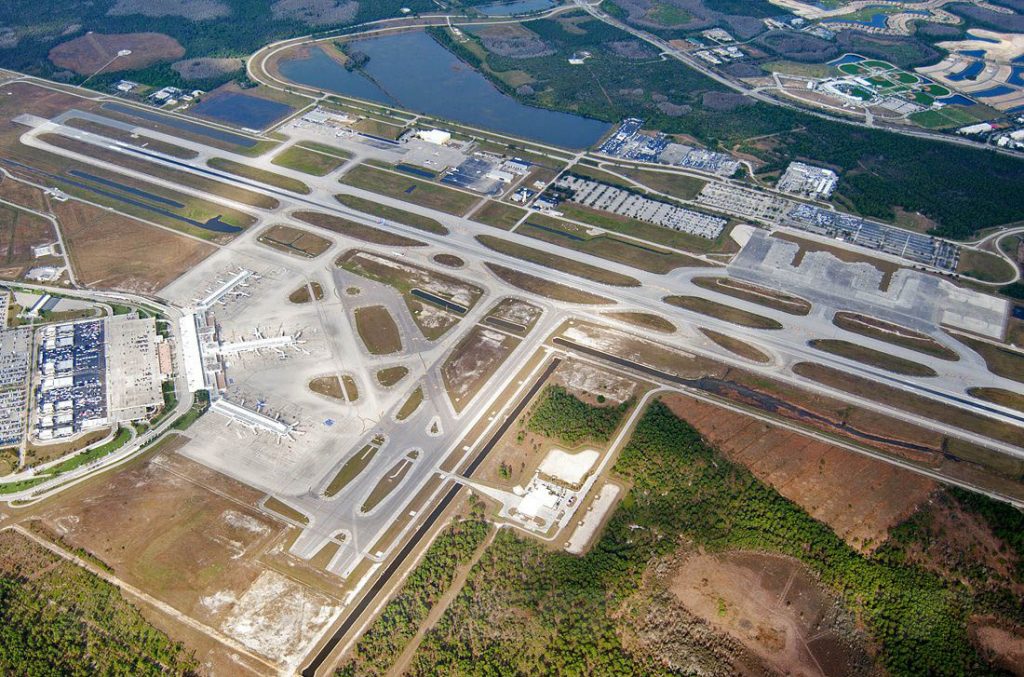
Awards
- J.D. Power & Associates Airport Satisfaction Study – Ranked 2nd among North American airports with under 10 million annual passengers
- Florida Department of Transportation 2008 Commercial Airport of the Year
- Airports Council International-North America Excellence in Marketing and Communications 2008: 1st Place Special Events for Aviation Day
- Airports Council International-North America 2008: 1st Place for Concession Convenience and 2nd Place for Food Concessions
- Airports Council International-North America 2009: 2nd Place Newsletter – Internal or E-mail and 2nd Place Special Events – Berlin Airlift
- Federal Aviation Administration 2009 Disadvantaged Business Enterprise Advocate and Partner Award
- Florida Airports Council 2008 Environmental Excellence Award for Mitigation Park
- Airport Revenue News 2008 Best Concessions Award for top Concessions Program Design
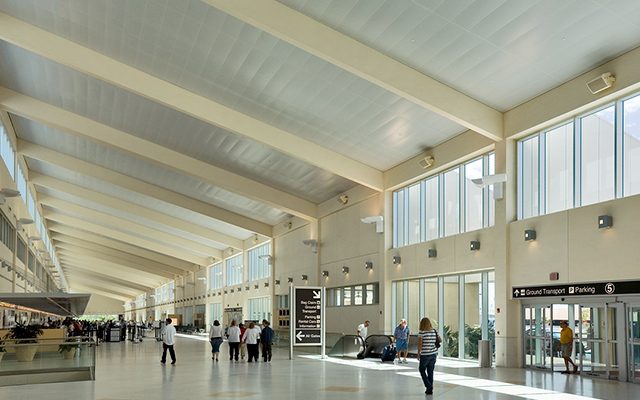
Southwest Florida International Airport Data
- Country
- America
- Region
- North America
- Status
- In use
- Location
- Lee County, adjacent to Fort Myers
- Owner(s)
- Lee County
- Official website
- flylcpa.com
- Operator(s)
- Lee County Port Authority
- Began
- 1980
- Opened
- May-14, 1983
- Airport type
- Public
- Airport code
- IATA:RSW,ICAO:KRSW,FAA LID:RSW
- Airport area
- 13566 acres / 54.9 km²
- Runway length
- 1*3658 m
- Passenger traffic
- 10.22 million(2019)
- Freight volume
- 16,184 tons (2019)
- Takeoffs and landings
- 85227 sorties (2019)
View Southwest Florida International Airport on Google Satellite Map
Google satellite maps allow you to see building details more clearly, including natural landscapes such as mountains, rivers, deserts, sea and man-made engineering buildings.
If you are very interested in this engineering building, it is a good idea to click below Google Map icon. We will help you jump to the corresponding location of this building or engineering on Google satellite map.






























































